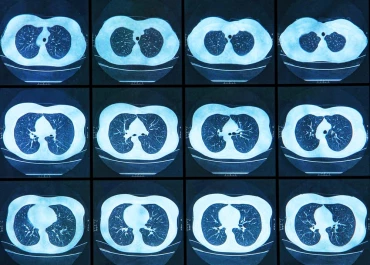Can A Low-Dose CT Scan Detect Early-Stage Lung Cancer?

Lung cancer, the most deadly form of cancer, is often only caught after it has reached a late stage where the survival rate can be as low as 4.7 percent. When caught in its earlier stages, lung cancer has a five-year survival rate of around 63 percent. Unfortunately, only around a quarter of all cases of lung cancer are diagnosed in the early stages, making a screening tool like the low-dose CT scan invaluable for detecting cancer while it’s still treatable.
What Is A Low-Dose CT Scan?
A low-dose CT (computed tomography) scan is a special kind of X-ray that uses a low dose of radiation to take pictures of a patient’s chest as they lie on a table that moves them in and out of the machine. A computer then combines these results into a detailed picture of the lungs. It’s an excellent preventative tool that can catch signs of the disease before the patient becomes symptomatic, making treatment more effective.
When Could A Low-Dose CT Scan Be Helpful?
Because the prognosis for lung cancer patients is so much better when the disease is diagnosed early, people at high risk of developing lung cancer are recommended to undergo routine testing to detect small cancerous masses before they begin to cause symptoms.
Currently, low-dose CT screenings are recommended annually (or sometimes more frequently) for people aged 50-80 who are either current heavy smokers or former heavy smokers within the past 15 years. A heavy smoker is typically defined as someone with a 20-pack-year history, meaning one pack per day for 20 years, two packs per day for 10 years, etc. If someone’s job or home environment puts them at higher risk of lung cancer, they may also be advised to be screened with a low-dose CT scan.
Are There Any Downsides To Using A Low-Dose CT Scan?
Low-dose CT scans are very safe but have some risks and limitations. One such risk comes from the fact that lung cancer screenings use radiation. While the dosage of radiation exposure is very small, there is a theoretical risk that frequent scans could contribute to the formation of cancer. Because of this, low-dose CT scans are only recommended in people with a high risk of developing lung cancer, as the benefit of early detection is greater than the cancer risk due to the scan itself.
A potential limitation of the low-dose CT scan is that it, like any screening tool, can have false negatives and positives. Because of this, tests are repeated annually, and any positive results are investigated further before being labeled as officially cancerous. Insurance coverage can also be problematic for some patients if they don’t meet their insurance company’s prerequisites for undergoing a low-dose CT scan.
What Could Happen If A Doctor Fails To Utilize A Low-Dose CT Scan When Indicated?
Lung cancer screening utilizing a low-dose CT scan has the potential to catch lung cancer while it’s still in its early stages, but studies have shown that it’s a severely underutilized tool. In fact, only 4.5 percent of all eligible candidates were screened for lung cancer using a low-dose CT scan in 2022. When doctors either neglect or refuse to order a low-dose CT scan in patients with a high risk of lung cancer, they run the risk of missing a lung cancer diagnosis until it’s too late to provide effective treatment. If this tool was used appropriately, tens of thousands of lives could be saved annually.
Why Choose Ross Feller Casey?
If you or a loved one has been diagnosed with lung cancer, you know how difficult it can be to accept the prognosis. If you met the eligibility criteria for screening with a low-dose CT scan, but your doctor neglected to perform the test before your late-stage cancer diagnosis, then you may be entitled to compensation. While lung cancer is always a difficult cancer to treat, catching it early with a screening tool like a low-dose CT scan can help ensure that a cancer victim has the best possible chance of achieving remission.
If you think that a doctor failed to order a low-dose CT scan due to negligence and a lung cancer diagnosis was missed, then contact our team at Ross Feller Casey. We understand that not everyone is a candidate for this type of lung cancer screening, but the vast majority of people who should be screened are not getting the care that they deserve.
Lung cancer screenings could save countless lives if doctors followed current medical guidelines. If your family suffers from a doctor’s negligence, it’s time to act. The lawyers and doctors on our team are standing by and ready to fight for you. There’s no fee unless you win. Consultations are always free, so contact us today.
Disclaimer: Ross Feller Casey, LLP provides legal advice only after an attorney-client relationship is formed. Our website is an introduction to the firm and does not create a relationship between our attorneys and clients. An attorney-client relationship is formed only after a written agreement is signed by the client and the firm. Because every case is unique, the description of awards and summary of cases successfully handled are not intended to imply or guarantee that same success in other cases. Ross Feller Casey, LLP represents catastrophically injured persons and their families in injury and wrongful death cases, providing legal representation in Pennsylvania and New Jersey.





